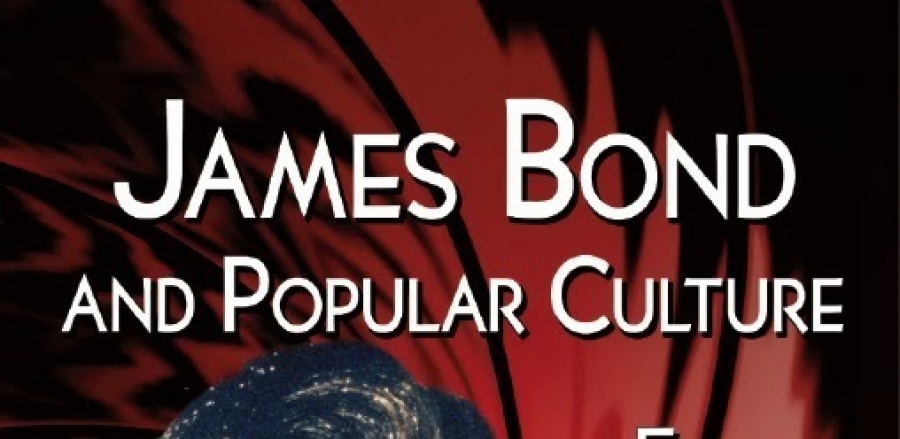When this assignment was first sent out by my boss, I had fellow friends and reviewers approach me with, “Dude, did you pick up that James Bond review?” See, if you know me well enough, you’ll know that I am a HUGE James Bond fan! I’ve seen each of the 23 films more than once. I have autographs from all SIX actors who have played James Bond in the official movies (Yes, including George Lazenby . . . ). I even have signatures by Judi Dench, Richard Kiel (Jaws), and Honor Blackman, better known as “Pussy Galore.” I even still own a Nintendo 64 gaming system solely for the purpose of playing the best James Bond video game ever made, Goldeneye. So, when I first picked up a copy of James Bond and Popular Culture: Essays on the Influence of the Fictional Superspy and read that it was dedicated “to fans of spyfi, espionage, and, of course, James Bond aficionados everywhere,” I knew I was meant to review this novel.
Now, one might say that it’s easy to see how important James Bond has inspired the film industry. As Robert G. Weiner mentions in his Foreword, Ian Fleming’s famous character is over 60 years old, and the movies weren’t too far behind with the franchise’s 23rd film, Skyfall, celebrating Bond’s 50th anniversary in film in 2012. Dr. No was the first Bond movie to be made in 1962, and as Part One in this collection of essays points out, the James Bond franchise ignited an entire “spy boom” in Japan during the 1960s. What with You Only Live Twice being filmed in Japan during the summer of 1966, as author Michael Baskett suggests, James Bond was an excellent excuse for Japanese culture to transition from movies about ninjas to being all about spies (otherwise known as “ninjas in a suit”). Why, even author Nicholas Diak shows us how Italy’s Eurospy outburst was the cause of Goldfinger. Trust me. Diak has a graph to prove it. And, with everything else going on in the world at the time, even Bollywood was a sucker of influence as authors Ipshita Nath and Anubhav Pradhan suggest. The rest of the world was just trying to keep up with the greatest spy that ever lived . . . and lived . . . and lived . . .
Part Two of James Bond and Popular Culture focuses on his influence in television which is more prominent than one realizes. My favorite essay from this group was Cynthia W. Walker’s “Mr. Bond’s Neighborhood: Domesticating the Superspy for American Television.” In this essay, Walker distinctly points out that The Man from U.N.C.L.E. was a major television success after the influence of Goldfinger and other Bond films during the 1960s. Stars Robert Vaughn and David McCallum became just as popular as Sean Connery himself, and even popular shows like The Beverly Hillbillies and The Dick Van Dyke Show had spy-themed episodes of their own. And, spy-related shows have continued into the present day with the likes of Alias, Burn Notice, Person of Interest, and more. Even author Thomas Barrett continues to make a case for David McCallum’s character, Illya Kuryakin, in The Man from U.N.C.L.E. And, let’s not forget Bond’s influence on one of the most popular present-day spies, Doctor Who! Needless to say, James’ influence on American television continues strong into the 21st century, and these authors don’t see it dissipating anytime soon.
Where this group of essays differ, however, as pointed out by editor Michele Brittany’s introduction, is how James Bond influenced not only film, television, and literature, but also video games, our own lifestyle, and more. Parts Four and Five of this collection of essays discuss “all the rest.” As essayist Edward Biddulph points out, James Bond’s perfection for style quickly became the norm for “a man’s world” (as many newspaper advertisements in 1961 suggested). And, if you think about it, I dare you to pass any gentleman in a suit on the street and not be reminded of James Bond. Furthermore, author Ian Dawe has a pretty convincing argument that the spy-parody cartoon, Archer, is a major influence in the audio/voice-over industry as it continues to build its audience each season. And, James Fleury writes an excellent essay on Bond’s latest video game, 007 Legends, mentioning how the super spy continues to be played on most (if not, all) major gaming platforms. As mentioned earlier, I hang onto my almost 20-year-old gaming system just to play my favorite James Bond video game from time to time. And, I don’t play it often! In fact, I probably haven’t played the game in a few years now, but it’s there. And, I’m never getting rid of it.
So, I think it’s safe to say that Bond, James Bond, is a “bond” between worlds. He’s influenced our favorite TV shows, our style of clothing, even down to the video games that we play (and continue to play). Before reading James Bond and Popular Culture: Essays on the Influence of the Fictional Superspy, I knew I was a die-hard Bond fan, but I had no idea how influential he’s been on my life. I guess who we really have to thank for that is Ian Fleming. Therefore, I leave you with this:
Thank you, Mr. Fleming. Ian Fleming.
You have touched our lives in more ways that we ever knew.
May the bad guys always get caught.
May the good guys always prevail.
And, may 007 continue to teach us to take on this world without a scratch to show for.
Your #1 fan,
Desjardins, Joshua Desjardins

